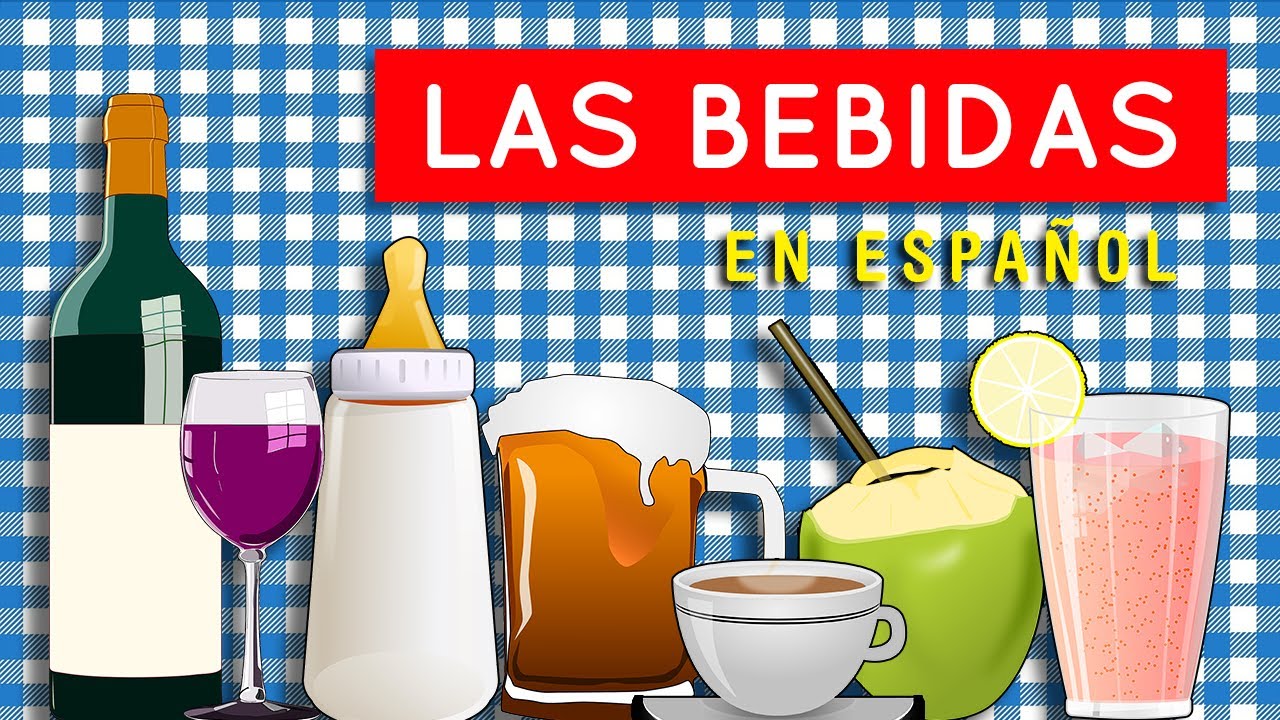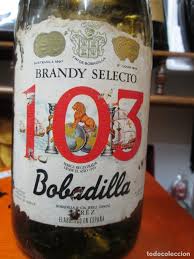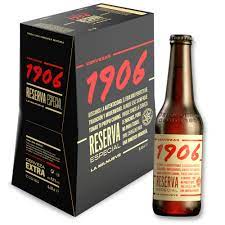0,0; 1; 7; 10; 12; 18; 42; 43; 51; 56; 60; 70; 80; 103; 108; 501; 1615; 1866; 1885; 1888; 1895; 1906; and 1925
By Joe King
 A surprising number of drinks, alcoholic and non-alcoholic, have a number in their name. From cerveza 0,0 (sin) via 7-UP lemonade to 1925 lager.
A surprising number of drinks, alcoholic and non-alcoholic, have a number in their name. From cerveza 0,0 (sin) via 7-UP lemonade to 1925 lager.
Here’s a light-hearted look at all the ones I can think of, mainly Spanish products, but also from the Caribbean, Chile, France, New Zealand, North America, Peru and Scotland.
Photo courtesy YouTube
0,0
This is cerveza sin (alcohol). These days, I guess all European brewers have this disgusting product in their repertoire. I hate the aftertaste, and the higher price, compared to beer WITH alcohol.
No. 1
Pimms No. 1, to be precise. Only for posh people in England, I reckon, although I have tried it and like it and I am NOT posh.
7
I guess we’ve all drunk 7-UP in our time. Produced by US giant PepsiCo, it’s similar to rival Coca Cola’s Sprite, a lemonade.
 But they are not equivalent. When my son was quite young, he was diagnosed with ADHD (Attention Deficit Hyperactive Disorder), which caused him to lack concentration, to be anti-social and naughty. Our specialist informed us that it was a condition that was made worse by chemical additives in food and drink – E numbers.
But they are not equivalent. When my son was quite young, he was diagnosed with ADHD (Attention Deficit Hyperactive Disorder), which caused him to lack concentration, to be anti-social and naughty. Our specialist informed us that it was a condition that was made worse by chemical additives in food and drink – E numbers.
By cutting out these colourings and additives from his diet, combined with brain exercises, we managed to hold the condition in check, until it largely disappeared in adulthood.
So, the only drinks possible for Tom as a child and a teenager were water, milk and 7-UP! which, back then, was advertised as containing no added preservatives. Sprite, on the other hand, is riddled with these “poisons”.
This caused a a problem whenever we came to Spain, as the Spanish regard the two drinks as equivalents. If the bar or restaurant sold Pepsi products, no problem, but if the establishment was contracted to Coca Cola, they just served Sprite.
 Try explaining to a Spanish waiter about ADHD, at least back at the end of the 20th century. It’s a bit like trying to explain that vegans eat no animal products, yet they still used to serve my vegan stepson, Johannes, salads with tuna and boiled egg.
Try explaining to a Spanish waiter about ADHD, at least back at the end of the 20th century. It’s a bit like trying to explain that vegans eat no animal products, yet they still used to serve my vegan stepson, Johannes, salads with tuna and boiled egg.
No. 7 is also a whiskey from the Jack Daniels stable in Tennessee (USA).
10; 12; 18
These numbers refer to the years a whisky is allowed to mature before release. I spotted an 18-year old single malt in a local wholesalers priced at 800-and-something euros a bottle!
42
42 Below is a vodka from New Zealand.
43
 Cuarenta y tres is a Spanish liqueur with 43 natural ingredients which is produced in Cartagena (Murcia). I’ve never tried it, but it is everywhere. When I was a student living in Spain, my fellow female students used to like it. (I think it’s a girlie drink – am I allowed to say that?)
Cuarenta y tres is a Spanish liqueur with 43 natural ingredients which is produced in Cartagena (Murcia). I’ve never tried it, but it is everywhere. When I was a student living in Spain, my fellow female students used to like it. (I think it’s a girlie drink – am I allowed to say that?)
51
This number has been chosen for two completely different spirits from two different countries.
 Firstly, it is a pastis, an anis-based aperitif from France. Distilled by the French company Pernod of Marseille, it refers to the alcoholic strength of this yellow-green liquid.
Firstly, it is a pastis, an anis-based aperitif from France. Distilled by the French company Pernod of Marseille, it refers to the alcoholic strength of this yellow-green liquid.
I have to confess to a liking for “un pastis”, a small amount of the spirit topped up with water. But I haven’t had one since the last time I was in France, some dozen years ago.
 51 is also the name of a cachaça, a distilled spirit made from fermented sugarcane juice, originating from Madeira but transferred to Brazil. It is widely available in Spain. I’ve never tried it, and probably never shall.
51 is also the name of a cachaça, a distilled spirit made from fermented sugarcane juice, originating from Madeira but transferred to Brazil. It is widely available in Spain. I’ve never tried it, and probably never shall.
56
 Jägermeister is a German digestif made with 56 herbs and spices. Developed in 1934 by Wilhelm and Curt Mast, originally vinegar manufacturers, it has an alcohol by volume (ABV) of 35%. The recipe has not changed since its creation and continues to be served in its signature green glass bottle. It is the flagship product of Mast-Jägermeister SE, headquartered in Wolfenbuettel, Germany.
Jägermeister is a German digestif made with 56 herbs and spices. Developed in 1934 by Wilhelm and Curt Mast, originally vinegar manufacturers, it has an alcohol by volume (ABV) of 35%. The recipe has not changed since its creation and continues to be served in its signature green glass bottle. It is the flagship product of Mast-Jägermeister SE, headquartered in Wolfenbuettel, Germany.
I always have a bottle in my drinks cabinet, although I haven’t personally drunk it since my twenties.
60, 70 and 80 Shilling
These are generic names for types of ale produced by many breweries in Scotland. The 'shilling' designation refers to the amount of duty paid on different strength beers. The higher the number, the stronger the beer.
Types include:
Scottish Light (60 Shilling): Although rare, this style is experiencing a bit of a renaissance. It’s often only available in casks. These beers are weaker, sweeter, and darker than modern-day English beers.
Scottish Heavy (70 Shilling): Also known as Scottish Heavy, this beer falls into the same category. It shares characteristics with the Scottish Light but has a slightly higher gravity. These beers are clean, malty, and finish dry, with occasional hints of peaty earthiness (smoke).
Scottish Export (80 Shilling): The Scottish Export is richer and stronger than the previous two. It boasts a deep amb er colour, moderate bitterness, and a clean, neutral finish.
er colour, moderate bitterness, and a clean, neutral finish.
In summary, these Scottish ales are malt-forward, low in hops, and distinct from their English counterparts. Their unique flavours and historical context make them a delightful choice for beer enthusiasts.
103
Ciento tres is an economy coñac, brandy, in Spain, distilled from sherry by the Osborne group in Jerez de La Frontera (Cádiz). That too is available everywhere in Spain, like Guinness is in the UK and Ireland.
108
This is a non-alcoholic drink made by Seedlip. So, not for me!
1615; 1866; 1885; 1895; 1906; 1925
These are all alcoholic drinks that bear the date of first manufacture.
Pisco 1615 is a colourless or yellowish-to-amber coloured spirit produced in winemaking regions of Peru and Chile. Made by distilling fermented grape juice into a high-proof spirit, it was developed by 16th-century Spanish settlers as an alternative to orujo, a pomace brandy that was being imported from Spain.
is a colourless or yellowish-to-amber coloured spirit produced in winemaking regions of Peru and Chile. Made by distilling fermented grape juice into a high-proof spirit, it was developed by 16th-century Spanish settlers as an alternative to orujo, a pomace brandy that was being imported from Spain.
1866 is a premium brandy from sherry producer Osborne in Jerez de La Frontera (Cádiz).
 1885 is another premium brandy produced in Málaga by distilling DO Málaga wines. A bottle costs a mere 129 euros!
1885 is another premium brandy produced in Málaga by distilling DO Málaga wines. A bottle costs a mere 129 euros!
1888 is a premium rum distilled in the Dominican Republic by the company Brugal. Also out of my price range.
1895 is a whiskey from Jack Daniels of Tennessee (USA).
 1906 appears on the labels on bottles and cans of a premium lager brewed by Estrella Galicia, up in the northwest of Spain. It refers to the year the brewery was established in La Coruña. A lovely drink.
1906 appears on the labels on bottles and cans of a premium lager brewed by Estrella Galicia, up in the northwest of Spain. It refers to the year the brewery was established in La Coruña. A lovely drink.
1925 is the date which appears on a premium lager from the Alhambra brewery in Granada and is the year that the factory opened there. That too is a very drinkable beer.
© Joe King
Acknowledgements:
Cervezas Alhambra (Granada)
Coca Cola
Estrella Galicia (La Coruña)
Osborne (Jerez de la Frontera)
PepsiCo
Pernod
Wikipedia
YouTube
Tags:
7, 7-UP, 42, 43, 51, 60, 60 shilling, 70 shilling, 80 shilling, 103, 1906, 1925, ale, Alhambra, beer, brandy, Brazil, cachaça, cerveza, Chile, Coca Cola, coñac, duty, Estrella Galicia, Gonzalez Byass, Granada, Jack Daniels, Jerez de la Frontera, Joe King, La Coruña, lager, Madeira, Marseille, New Zealand, orujo, pastis, PepsiCo, Pernod, Peru, Tennessee, whiskey